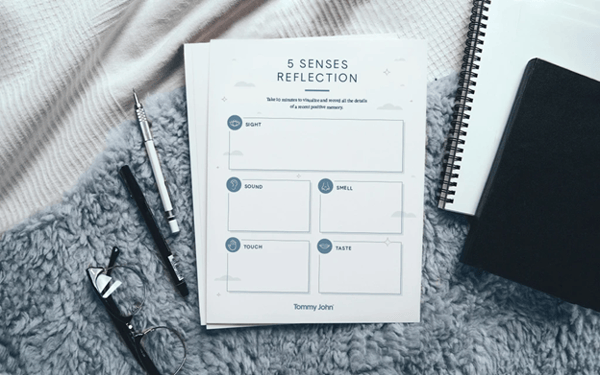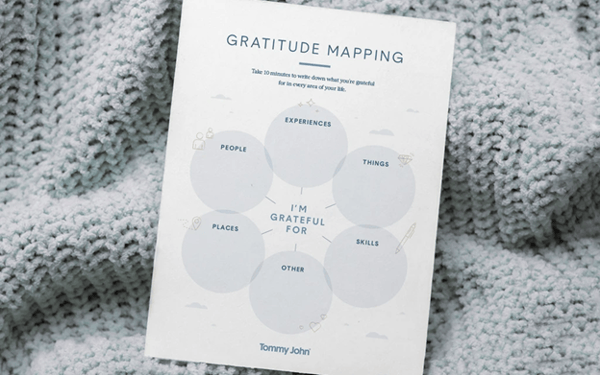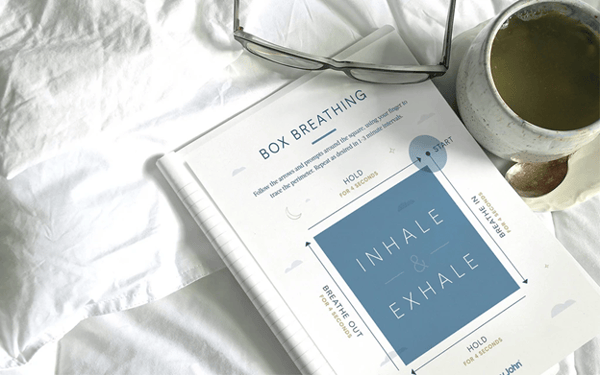Americans spend most of their waking hours in front of screens. According to recent studies, they spend around 12 hours a day in front of just televisions and computers alone. Due to the current climate and stay at home orders, the amount of digital media consumed globally has increased by 60% as many flock to screens for news updates, entertainment or simply to escape a chaotic world. This spike in digital media consumption can impact our health and wellbeing as a constant connection to our devices makes it hard to shut off our brains and disconnect.
Limiting screen time should be prioritized as our devices emit an artificial blue light that can inhibit the release of melatonin, which can interfere with the body’s natural Circadian rhythm. This interference can decrease sleep time and increase tiredness when we allow our devices to enter our bedtime routines. We need to retrain our brains to find different outlets for unwinding.
To provide a holistic way to destress at home, we gathered 3 screen-free mindfulness focused writing exercises perfect for relaxing before bed. According to the National Sleep Foundation, mindful techniques like journaling can create physiological changes that are similar to those that occur when your body is in the early stages of sleep. Some of the bodily changes that prepare you for deep sleep include the slowing of your pulse, drops in blood pressure and decreases in cortisol levels. These physical changes in your body can help mitigate anxiety induced insomnia and help you stay asleep longer.
Journaling Activities to Spark Mindfulness
Before getting started, let’s define what practicing mindfulness means. The Mayo Clinic defines mindfulness as a “type of meditation in which you focus on being intensely aware of what you're sensing and feeling in the moment, without interpretation or judgment”. Practicing mindfulness can involve breathing, guided meditation or journaling in order to relax the body and mind.
Between work and our personal life, we all spend a lot of time planning, worrying and negatively thinking. Mindfulness exercises can help direct our attention away from this kind of thinking and instead guide us to think more positively about the world around us.
Unsure where to start? If you’re interested in incorporating self-care journaling into your sleep routine try the following mindfulness activities.
Five Senses Reflection

This writing exercise is focused on reflecting on a positive experience. Pick one memory from the recent past (preferably the past week) that was a positive experience for you. If you’ve recently seen family or achieved a new milestone in your personal or professional life, reflect on every detail of the experience. During reflection, use all five senses to feel, smell, hear, see and even taste the experience. By reflecting on it, visualizing it, and feeling each detail you’ll slowly transition your mind into a more meditative state.
Once you’re ready, move into the journaling portion of this activity. Take our “5 Senses Reflection” printable and write down each sense experience. Use this exercise to continue feeling and embracing the positive moment.
If you lose focus or get distracted acknowledge the distracting thought, embrace it, and then let it go. Patiently return back to your story rather than letting unrelated thoughts frustrate you.
The benefits of incorporating this writing practice before bed, is that it centers and grounds you as well as reminds you to be mindful of the positive details of life. By practicing positivity before bed, you are clearing your head of any stress or frustration and will feel more relaxed and less tense when you wake up.
Gratitude Mapping Exercise

Our next activity is gratitude mapping. A gratitude map is a great tool for becoming more aware of your thoughts and feelings. This exercise allows you to take a topic and break it into smaller, more specific ideas. When you direct your thoughts to focus on all the little things you have to be grateful for, you are able to boost your mood and positively prepare yourself for a new day.
Start this activity by setting a timer for 10 minutes. Grab our “Gratitude Mapping” printables and record everything that you are thankful for. Focus on filling in the categories like people, places, experiences and things. Be as specific as possible and focus on the feeling of gratitude as you’re writing. There’s even a category for “other” if what you are grateful for does not fit in one of the other categories.
The benefits behind gratitude mapping are that it declutters your mind and blocks negative thought patterns like comparison, jealousy, anxiety and fear. It also increases awareness of all the positive things already in your life and helps you feel more at peace as you sleep.
Box Breathing

While our last activity is not necessarily a journaling exercise, it can be helpful for preparing yourself to write or for transitioning into meditation. This activity is called box breathing and is one of the fastest ways to reset your breath. This breathing exercise is used by the Navy Seals to remain calm in stressful situations and can be used for calming yourself down before bed time as well.
The first step is finding a quiet place where you can meditate free of distraction. Next, set a timer for one to three minute intervals. You can either use your finger to trace the blue square on our “Box Breathing” printable, or place one hand on your chest and the other on your lower stomach to feel the air entering and leaving your body. Breathe in for four seconds, completely filling your lungs. Hold your breath for four seconds and then exhale for four seconds, being sure to expel every last bit of air. Hold your lungs empty for another four seconds and repeat this process four times or as much as desired.
We hope you’ve learned a few new journaling techniques to help you practice mindfulness before bed. From starting your day on the right foot to ending a long day with self-care and peace, therapeutic journaling can benefit every stage of your day. Happy journaling!
 Author bio: Stacy Walden is a writer from sunny San Diego. She enjoys covering topics around wellness, personal development, and work-life balance. When she's not writing she enjoys traveling with her family
Author bio: Stacy Walden is a writer from sunny San Diego. She enjoys covering topics around wellness, personal development, and work-life balance. When she's not writing she enjoys traveling with her family



Leave Comment